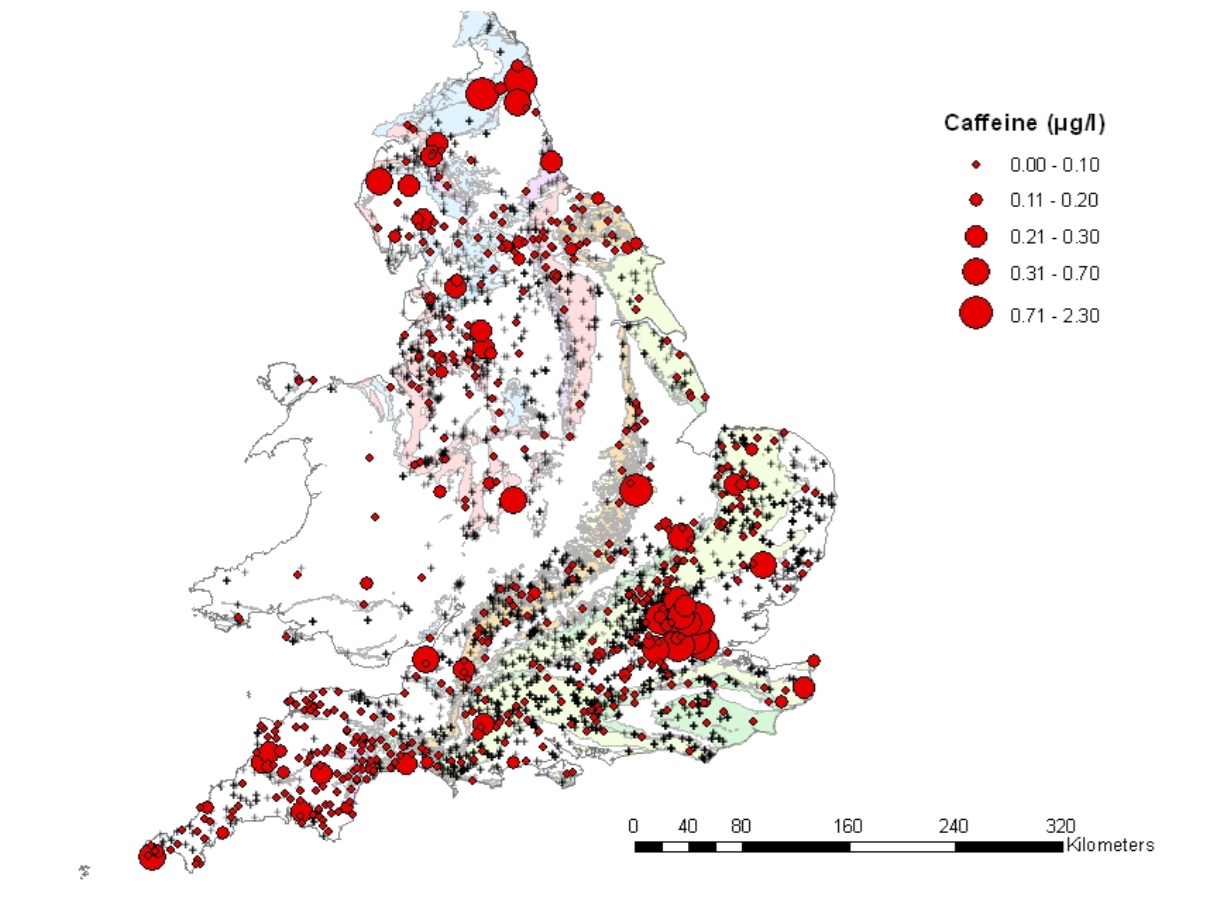BGS undertook a review of emerging contaminants in groundwater (Stuart et al., 2011), which is available for free download. The report includes a review of previous literature and a new assessment of Environment Agency monitoring data for less commonly analysed compounds in groundwater. The Emerging contaminants in groundwater briefing note provides a summary of our findings.

Compounds such as medicines and other pharmaceuticals are now being detected in UK groundwaters. Image © Pexels via pixabay.
What are emerging contaminants?
We are now seeing previously undetected organic micropollutants in the aqueous environment due to improvements in analytical techniques. These are known as emerging contaminants and include chemicals such as caffeine, nicotine and ibuprofen. Many of the contaminants are currently unregulated. Some of these contaminants can have human or ecological health effects and there is a need for better understanding of their fate in environmental systems.
Metaldehyde
Metaldehyde is an example of a compound that has emerged relatively recently as a groundwater contaminant. Metaldehyde is a selective pesticide used to control slugs. First introduced in 1940, it has been widely used in all sectors (agriculture; horticulture; recreational land; gardens) since the 1970s.
Until 2007, there was not a satisfactory method for measuring metaldehyde concentrations in treated water. The development of a new methodology has enabled monitoring for metaldehyde in drinking water supply catchments. Levels in some sources have been close to or above the 0.1 μg/L EU drinking water limit for pesticides.
What types of compounds have been identified in groundwater?
The types of organic micropollutants that have been found in groundwater worldwide include:
- mirco-and nanomaterials (very small particles)
- pesticides and their metabolites or breakdown products
- pharmaceuticals and hormones, including veterinary medicines
- personal care products and fragrances
- industrial additives and by-products
- water treatment by-products
- flame or fire retardants and surfactants
- caffeine and nicotine, and their metabolites

Mean concentration of caffeine in groundwater in England and Wales. Data from the Environment Agency’s database. (From Stuart et al, 2001.) BGS © UKRI.
How does contamination get into groundwater?
There is a wide variety of sources and pathways that allow these compounds to enter the environment. Sources include:
- agriculture
- animal husbandry
- industry
- waste disposal
- urban areas
Pathways to groundwater include leaching from cultivated areas or animal waste, effluent discharged from waste-water treatment works to ponds that infiltrate to groundwater, or to surface water that then interacts with groundwater.
Many of the compounds are relatively small, polar molecules that are not effectively removed by conventional drinking-water treatment using activated carbon. They can potentially persist in supplied water.
How can we identify possible groundwater contaminants?
In order to assess the hazards presented by potential organic micropollutants, information on usage, persistence and leachability, as well as a robust, sensitive analytical method, is required. The UK metaldehyde problem was not originally discovered due to lack of an analytical method and was exacerbated by its recalcitrance in water treatment.
Further reading
Lapworth, D J, Baran, N, Stuart , M E, Manamsa, K, and Talbot, J. 2015. Persistent and emerging micro-organic contaminants in Chalk groundwater of England and France. Environmental Pollution, Vol. 203, 214–225. DOI: https://doi.org/10.1016/j.envpol.2015.02.030
Lapworth, D J, Crane, E J, Stuart, M E, Talbot, J C, Besien, T, and Civil, W. 2018. Micro-organic contaminants in groundwater in England: summary results from the Environment Agency LC-MS and GC-MS screening data. British Geological Survey Open Report OR/18/052. (Nottingham, UK, British Geological Survey.)
Lapworth, D J, Lopez, B, Laabs, V, Kozel, R, Wolter, R, Ward, R, Amelin, E V, Besien, T, Claessens, J, Delloye, F, Ferretti, E, and Grath, J. 2019. Developing a groundwater watch list for substances of emerging concern: a European perspective. Environmental Research Letters, Vol. 14(3), 035004. DOI: http://doi.org/10.1088/1748-9326/aaf4d7
Stuart, M E, and Lapworth, D J. 2014. Transformation products of emerging organic compounds as future groundwater and drinking water contaminants. 65–86 in Transformation Products of Emerging Contaminants in the Environment. Lambropoulou, D A, and Nollet, L M L (editors). (UK: John Wiley and Sons Ltd.)
Stuart, M E, Manamsa, K, Talbot, J C, and Crane, E J. 2011. Emerging contaminants in groundwater. British Geological Survey Open Report OR/11/013. (Wallingford, UK: British Geological Survey.)

